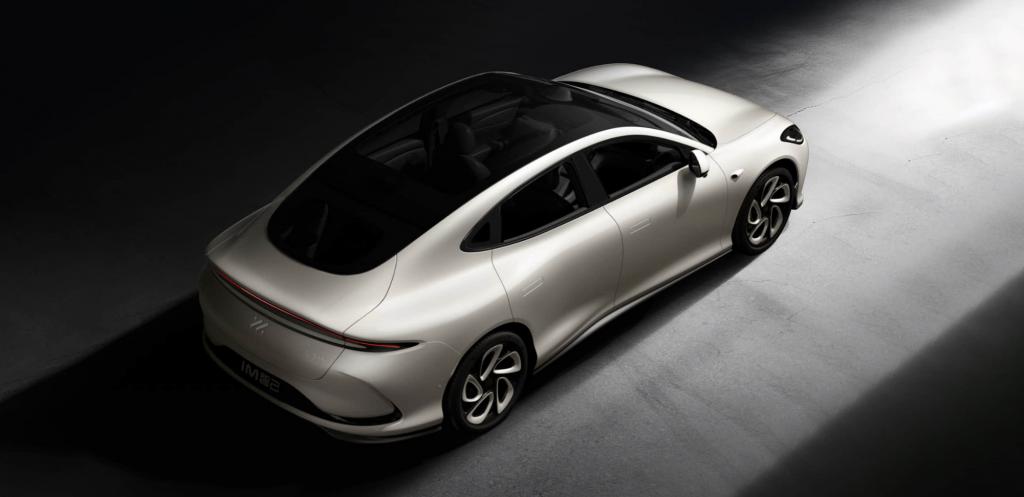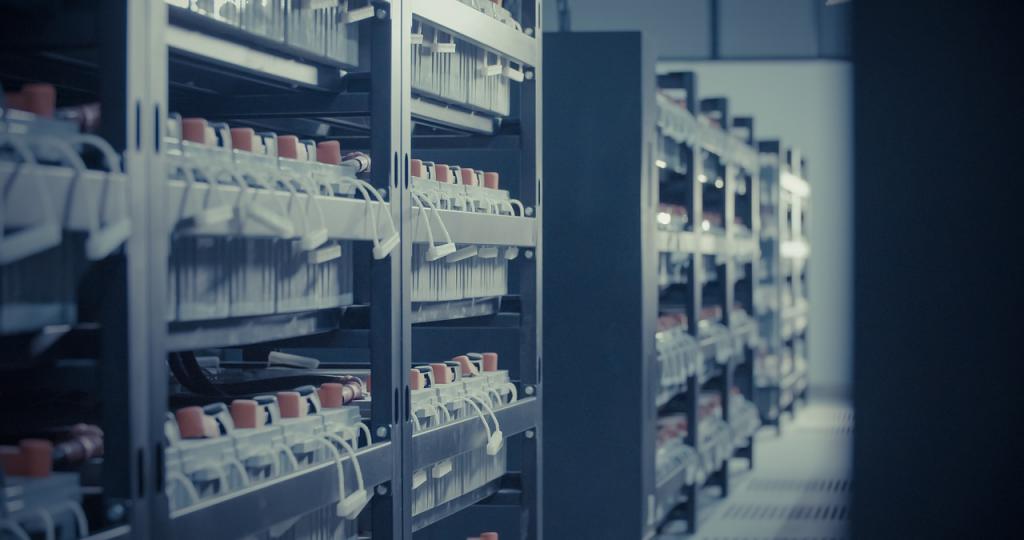Recently, Group1 announced the launch of the world's first KIB potassium-ion battery using 18650 cylindrical casing. Its new potassium-ion battery can be seamlessly integrated into the existing LIB lithium-ion battery production process, and is expected to provide an alternative to traditional lithium-ion batteries. A sustainable and cost-effective alternative.

How potassium ion batteries work
Alexander Girau, CEO of Group1, said that the new battery has been developed for many years and has excellent performance. It has excellent cycle life and is able to maintain high capacity after multiple charge and discharge cycles, which is critical for applications such as electric vehicles. In addition, the battery has strong discharge performance and can effectively provide power when needed.
According to reports, this battery uses Group1’s 4V Prussian White Potassium (KPW) cathode material called Kristonite. Compared with lithium-ion batteries based on lithium iron phosphate (LFP-LIB) and sodium-ion batteries (NIB), its performance is , security and cost are more balanced.
The potassium-ion battery uses the same form factors as the widely used 18650 lithium-ion battery, measuring 18 mm in diameter and 65 mm in height, allowing it to be seamlessly integrated into existing devices and applications.
The battery operates at a nominal voltage of 3.7V, thus ensuring compatibility with modern electronic devices and systems. In addition, the energy density of the battery can reach 160-180Wh/kg, which is equivalent to the lifepo4 battery.
In addition, it is worth mentioning that this potassium-ion battery uses commercialized graphite anode, separator and electrolyte formulas, reducing the complexity of the supply chain and reducing the use of key minerals such as nickel, cobalt, copper and lithium. rely.
Group 1 is already distributing samples of this potassium-ion battery to partners in OEMs and battery manufacturers, hoping that it can become a powerful alternative to lifepo4 batteries and sodium-ion batteries.
In fact, the working principle of potassium-ion batteries is similar to that of lithium-ion batteries and sodium-ion batteries, following the "rocking chair" working principle, that is, the reversible migration of potassium ions between electrodes during the charge/discharge process.
The core components of a potassium ion battery include positive electrode, negative electrode, electrolyte and separator. Both positive and negative active materials can be coated on aluminum foil, and the positive and negative electrodes are separated by a separator to avoid short circuits. The electrolyte is mostly an organic solution mixed with potassium salts. The common potassium salt is potassium hexafluorophosphate (KPF6). The common solvents are ethylene carbonate (EC), diethyl carbonate (DEC), and dimethyl carbonate (DMC). )wait.
During the charging process, potassium ions are released from the positive electrode material, move to the negative electrode side through the separator and electrolyte, and are embedded in the negative electrode material. At this time, the positive electrode material is in a potassium-poor state, while the negative electrode material stores energy due to the embedded potassium ions. At the same time, the energy (electrical energy) provided by the external power source is converted and stored in the battery in the form of chemical energy. Take manganese-based materials as an example. In the charged state, the manganese-based materials reduce potassium manganate to oxidized manganese at the positive electrode, which is positively charged. At the same time, the potassium ions in the electrode diffuse outward and form a solution.
During the discharge process, potassium ions are released from the negative electrode material, move to the positive electrode side through the separator and electrolyte, and are embedded in the positive electrode material. At this time, the positive electrode material regains potassium ions, returns to the potassium-rich state, and releases the stored energy. At the same time, the conversion of chemical energy into electrical energy is achieved. In this process, in order to maintain the charge balance during charging and discharging, the number of electrons transferred through the external circuit during the reaction should be the same to maintain a certain potential.
The charging and discharging process of potassium-ion batteries is essentially a reversible diffusion process of potassium ions between positive and negative electrode materials, and it is also an energy conversion process between electrical energy and chemical energy. During charging, electrical energy is converted into chemical energy and stored in the battery; during discharge, chemical energy is converted into electrical energy and released.
Advantages and research progress of potassium ion batteries
Nowadays, the application of lithium-ion batteries is very mature. Why should we still study potassium-ion batteries? The first is that potassium is relatively abundant in the earth's crust, much more than lithium, and the mining and processing costs are relatively low. This gives potassium-ion batteries a significant advantage in raw material costs, helping to reduce the overall manufacturing cost of batteries and improve the sustainability of the industry.
In addition, compared to lithium-ion batteries, potassium-ion batteries have high energy density characteristics. High energy density means longer battery life and smaller battery size, which is particularly important for mobile applications such as electric vehicles; a high operating potential window, which It means that it can work in a wider voltage range, improving the performance and stability of the battery; fast charge and discharge capabilities, the migration rate of potassium ions in the electrolyte is faster, making the potassium ion battery have a faster charge and discharge speed, Suitable for applications requiring fast charging and discharging.
Compared with lithium-ion batteries, potassium-ion batteries also have certain advantages in terms of safety. The melting point of metallic potassium is much lower than that of metallic lithium and sodium, so the mechanical properties of potassium dendrites are much weaker, and the formation of potassium dendrites can be weakened by controlling the temperature, reducing safety hazards. In addition, potassium-ion batteries also show good stability under extreme conditions such as overcharge and overdischarge.
In addition to Group 1 companies, there are also companies and institutions in China that are making progress in the research of potassium-ion batteries. It was reported in July this year that Anhui Guoxin New Materials Co., Ltd. cooperated with the State Key Laboratory of New Material Composite Technology of Wuhan University of Technology and successfully developed a global The first commercially available potassium-ion battery product.
The battery has high energy density (cell energy density is 151Wh/kg), long battery life (130 kilometers to 150 kilometers when fully charged, about 3 times higher than lead-acid batteries) and low cost (the production cost is basically the same as that of lead-acid batteries). Quite) and other advantages. It is expected to gradually replace lead-acid batteries for two-wheeled electric vehicles in the future and be widely used in other fields.

Conclusion
It can be seen that potassium-ion batteries have more advantages in industrial production and large-scale applications due to the abundance and stability of potassium element. In addition, potassium-ion batteries also have the advantages of high capacity, high charge and discharge efficiency, and good safety, and are one of the trends in future development. It is particularly suitable for applications in areas such as energy storage and electric vehicles.
However, despite this, potassium-ion batteries still face some technical challenges. For example, the larger radius of potassium ions leads to higher requirements for electrode materials; cycle life and energy density still need to be improved. Therefore, research on potassium-ion batteries requires continuous exploration of key technical areas such as new electrode materials, electrolytes, and battery structures to achieve performance breakthroughs and cost reductions.
Next:16pcs A123 31ah lifepo4 battery ship to Switzerland
Previous:Will lifepo4 battery life be affected by charging and discharging at the same time?
Contact Person: Miss. Elsa Liu
| WhatsApp : | +8617763274209 |
|---|---|
| Skype : | +8617763274209 |
| WeChat : | 17763274209 |
| Email : | Elsa@lifepo4-battery.com |